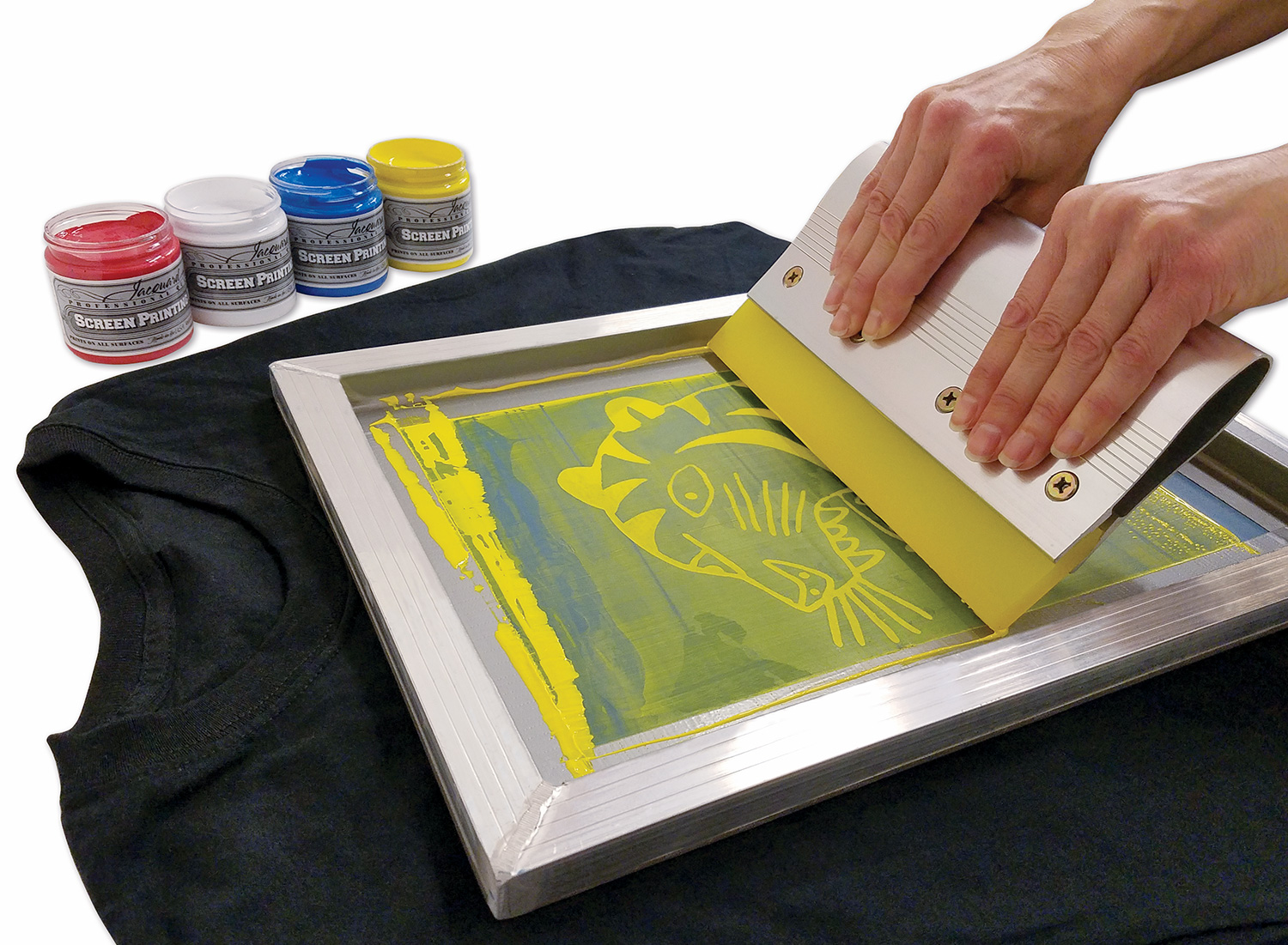The Crucial Overview to Understanding Screen Printing and Its Versatile Uses
Screen printing has a rich background that goes back to ancient times, evolving into an advanced method made use of throughout numerous sectors today. This guide discovers the complexities of the screen printing procedure, detailing its applications in home, fashion, and marketing style - 10:9 Design Texas. Comprehending these basics can open up creative potential for both creative and commercial jobs. The complying with areas will disclose crucial suggestions and methods to improve one's screen printing ventures
The Background of Screen Printing
Screen printing has roots that trace back centuries, its advancement reflects the technological and creative developments of numerous cultures. Coming from ancient China, the method was at first used for enhancing textiles and later infect Japan, where it became integral to Ukiyo-e woodblock printing. The method shifted to Europe in the 18th century, where it gained popularity amongst craftsmens and commercial printers. The creation of photo solution in the 20th century transformed screen printing, enabling even more complex layouts and higher effectiveness. Artists like Andy Warhol further pushed its appeal, utilizing the tool to create legendary works that combined commercialism and art. By the late 20th century, screen printing had actually established itself as a versatile strategy, used in fashion, advertising and marketing, and art. Today, it remains to evolve, integrating electronic technology and increasing its applications throughout different markets.
The Screen Printing Refine Explained
Screen printing transforms imaginative visions right into tangible designs via a collection of exact actions. A photo is created and then transferred onto a screen, typically made of great mesh fabric extended over a framework. A light-sensitive emulsion is related to the screen, which is subjected to light, hardening in areas not covered by the image. After rinsing the unhardened emulsion, a pattern is created.
Next, the screen is put over the substratum, whether it be material, paper, or one more product. Ink is then pushed with the open locations of the pattern utilizing a squeegee, transferring the style onto the substratum below. This process can be duplicated for several colors, requiring separate displays for each and every color. Lastly, the published product is cured utilizing warmth to assure the ink sticks effectively, leading to a resilient, vivid style ready for usage.
Sorts Of Screen Printing Techniques

In addition, specialized methods, such as discharge screen printing, remove color from the textile to develop softer prints, while aluminum foil screen printing applies metallic foil to attain a glossy coating (10:9 Design reviews). Each technique offers distinctive attributes, dealing with numerous imaginative demands and manufacturing ranges, inevitably broadening the opportunities within the screen printing domain
Applications of Screen Printing in Numerous Industries

In addition, the signage and marketing fields use screen printing for creating attractive screens and banners. This method enables strong shades and detailed designs that catch attention. In electronics, screen printing is utilized for applying conductive inks to motherboard, vital for part connections. Furthermore, the home decoration sector welcomes screen printing to create distinctive layouts on textiles and wall art. On more info the whole, screen printing acts as a vital device across diverse areas, boosting products with individualized and aesthetically enticing graphics.
Tips for Effective Screen Printing Projects
While undertaking a screen printing project, careful focus to information can substantially boost the final result. Picking top notch products is crucial; this consists of the screen, inks, and substrates. Utilizing suitable mesh matters can affect ink deposition and detail resolution. Prep work is similarly crucial; complete cleaning of displays and appropriate direct exposure times ensure crisp prints.
Next, precise enrollment is crucial for multi-color prints. Utilizing positioning tools can help achieve accurate layering. Furthermore, testing prints on scrap materials prior to manufacturing assists identify potential problems without squandering sources.

Regularly Asked Concerns
What Materials Are Finest for Screen Printing on Material?
Cotton and polyester blends are excellent for screen printing on material due to their longevity and ink absorption. In addition, specialized fabrics like silk or canvas can produce special structures and coatings, enhancing the total style quality.
Just how Do I Tidy and Maintain Screen Printing Equipment?
To clean up and maintain screen printing equipment, one ought to consistently clean screens with appropriate solvents, inspect squeegees for wear, lube relocating parts, and shop all items in a completely dry, dust-free atmosphere to lengthen their life expectancy.
What Are the Ecological Impacts of Screen Printing?
Screen printing can have significant environmental effects, including chemical waste from inks and solvents, water usage during cleansing processes, and energy consumption. Eco-friendly materials and sustainable methods are important for minimizing these adverse effects.
Can Screen Printing Be Done at Home Efficiently?
Screen printing can be successfully done at home with the ideal products and strategies. Enthusiasts can create quality prints, though success depends upon their ability level, devices, and understanding of the process included.
What Are the Costs Associated With Starting a Display Printing Company?

Starting a screen printing service includes prices for tools, products, and work area. Initial expenses usually range from a few hundred to a number of thousand bucks, relying on the scale, top quality of equipment, and wanted manufacturing capacity.
Screen printing has a rich background that dates back to old times, advancing into an advanced technique used across different markets today. Another method, rotary screen printing, employs cylindrical screens, helping with constant printing on textile rolls, therefore improving performance for large productions. Furthermore, specialized strategies, such as discharge screen printing, get rid of dye from the textile to develop softer prints, while foil screen printing uses metal aluminum foil to achieve a glossy surface. In the style market, screen printing is commonly made use of to produce vivid styles on apparel, enabling brand names to display their special designs. Cotton and polyester blends are excellent for screen printing on textile due to their resilience and ink absorption.